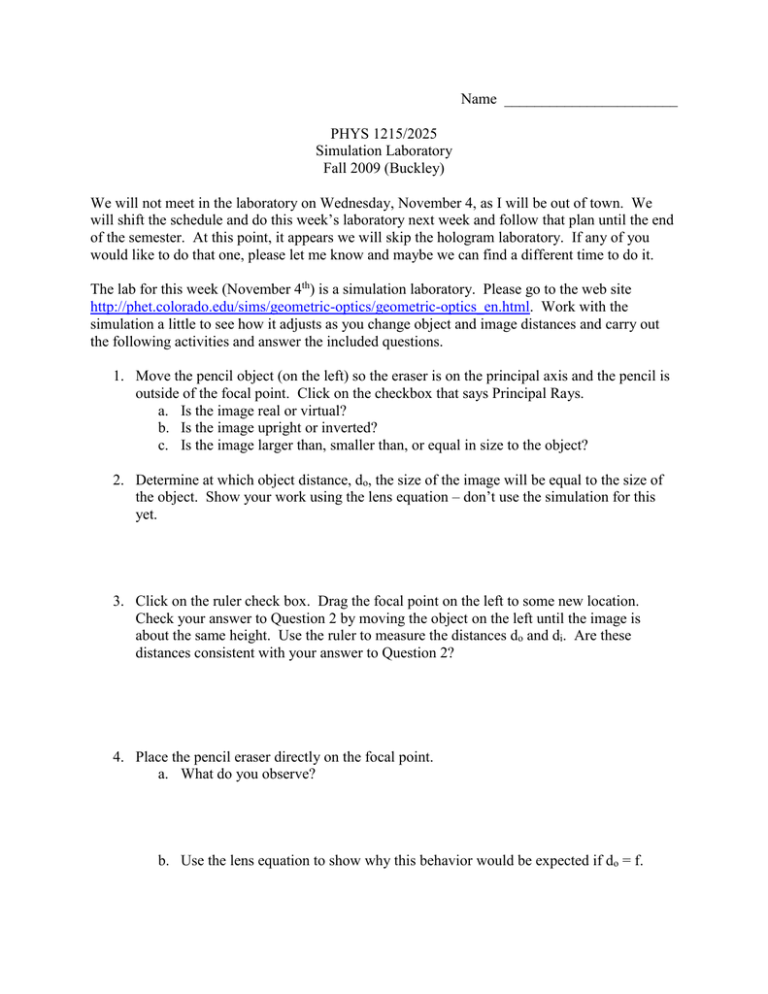OpticsSimulation.docx
advertisement

Name _______________________ PHYS 1215/2025 Simulation Laboratory Fall 2009 (Buckley) We will not meet in the laboratory on Wednesday, November 4, as I will be out of town. We will shift the schedule and do this week’s laboratory next week and follow that plan until the end of the semester. At this point, it appears we will skip the hologram laboratory. If any of you would like to do that one, please let me know and maybe we can find a different time to do it. The lab for this week (November 4th) is a simulation laboratory. Please go to the web site http://phet.colorado.edu/sims/geometric-optics/geometric-optics_en.html. Work with the simulation a little to see how it adjusts as you change object and image distances and carry out the following activities and answer the included questions. 1. Move the pencil object (on the left) so the eraser is on the principal axis and the pencil is outside of the focal point. Click on the checkbox that says Principal Rays. a. Is the image real or virtual? b. Is the image upright or inverted? c. Is the image larger than, smaller than, or equal in size to the object? 2. Determine at which object distance, do, the size of the image will be equal to the size of the object. Show your work using the lens equation – don’t use the simulation for this yet. 3. Click on the ruler check box. Drag the focal point on the left to some new location. Check your answer to Question 2 by moving the object on the left until the image is about the same height. Use the ruler to measure the distances do and di. Are these distances consistent with your answer to Question 2? 4. Place the pencil eraser directly on the focal point. a. What do you observe? b. Use the lens equation to show why this behavior would be expected if do = f. 5. Drag the slider at the top to change the refractive index of the lens. What happens to the focal length of the lens when the refractive index of the lens increases? Why is this the case? 6. Using the slider at the top, give the lens the largest diameter possible. Decrease the diameter and watch the image as you do. What happens to the image as the lens diameter increases?




